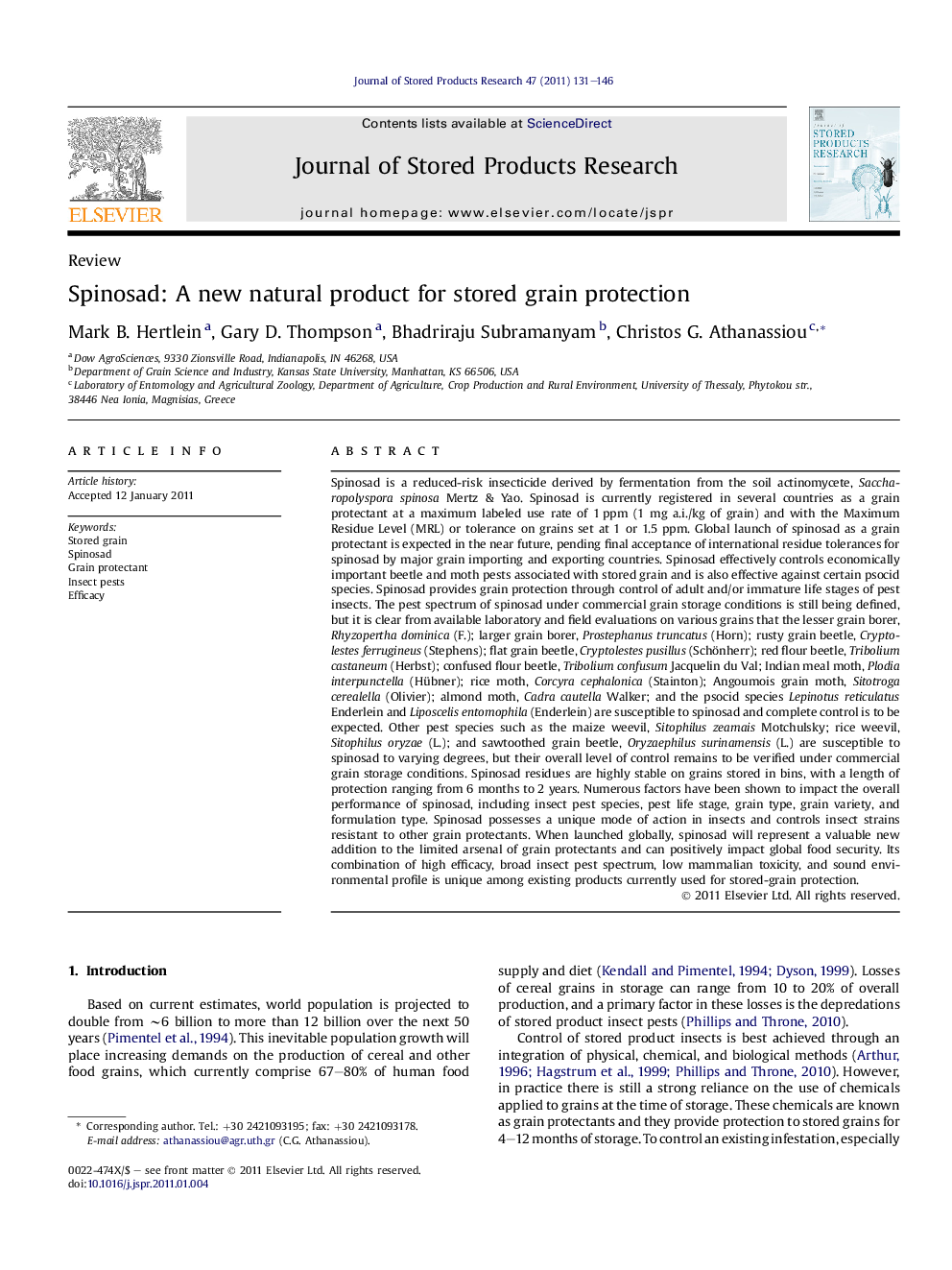| Article ID | Journal | Published Year | Pages | File Type |
|---|---|---|---|---|
| 4517198 | Journal of Stored Products Research | 2011 | 16 Pages |
Spinosad is a reduced-risk insecticide derived by fermentation from the soil actinomycete, Saccharopolyspora spinosa Mertz & Yao. Spinosad is currently registered in several countries as a grain protectant at a maximum labeled use rate of 1 ppm (1 mg a.i./kg of grain) and with the Maximum Residue Level (MRL) or tolerance on grains set at 1 or 1.5 ppm. Global launch of spinosad as a grain protectant is expected in the near future, pending final acceptance of international residue tolerances for spinosad by major grain importing and exporting countries. Spinosad effectively controls economically important beetle and moth pests associated with stored grain and is also effective against certain psocid species. Spinosad provides grain protection through control of adult and/or immature life stages of pest insects. The pest spectrum of spinosad under commercial grain storage conditions is still being defined, but it is clear from available laboratory and field evaluations on various grains that the lesser grain borer, Rhyzopertha dominica (F.); larger grain borer, Prostephanus truncatus (Horn); rusty grain beetle, Cryptolestes ferrugineus (Stephens); flat grain beetle, Cryptolestes pusillus (Schönherr); red flour beetle, Tribolium castaneum (Herbst); confused flour beetle, Tribolium confusum Jacquelin du Val; Indian meal moth, Plodia interpunctella (Hübner); rice moth, Corcyra cephalonica (Stainton); Angoumois grain moth, Sitotroga cerealella (Olivier); almond moth, Cadra cautella Walker; and the psocid species Lepinotus reticulatus Enderlein and Liposcelis entomophila (Enderlein) are susceptible to spinosad and complete control is to be expected. Other pest species such as the maize weevil, Sitophilus zeamais Motchulsky; rice weevil, Sitophilus oryzae (L.); and sawtoothed grain beetle, Oryzaephilus surinamensis (L.) are susceptible to spinosad to varying degrees, but their overall level of control remains to be verified under commercial grain storage conditions. Spinosad residues are highly stable on grains stored in bins, with a length of protection ranging from 6 months to 2 years. Numerous factors have been shown to impact the overall performance of spinosad, including insect pest species, pest life stage, grain type, grain variety, and formulation type. Spinosad possesses a unique mode of action in insects and controls insect strains resistant to other grain protectants. When launched globally, spinosad will represent a valuable new addition to the limited arsenal of grain protectants and can positively impact global food security. Its combination of high efficacy, broad insect pest spectrum, low mammalian toxicity, and sound environmental profile is unique among existing products currently used for stored-grain protection.
► Like most grain protectants spinosad effectiveness against a variety of stored product insects at the maximum registered use rate of 1 ppm varies with the species, life stage, commodity treated, and spinosad formulation type. ► Field tests show spinosad to be stable on corn and wheat for a period of six months to two years. ► Spinosad’s unique and non-cross resistant mode of action will make it a valuable new tool in stored grain resistance management programs. ► The practical pest spectrum controlled under commercial grain storage conditions still requires further confirmation after global launch of spinosad.
